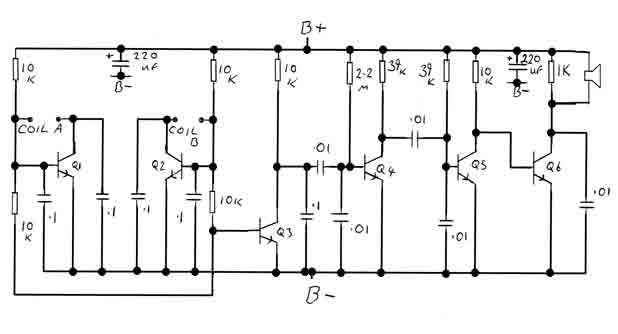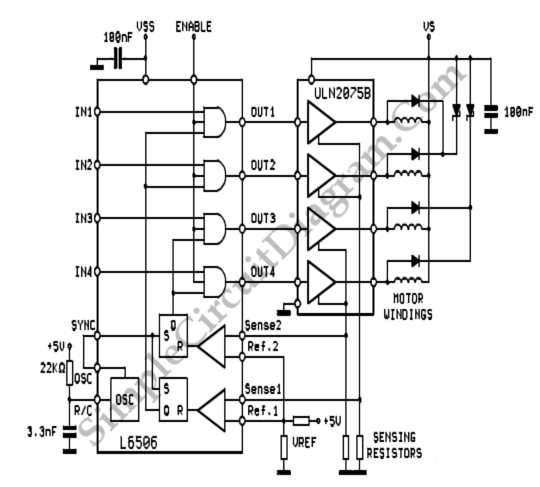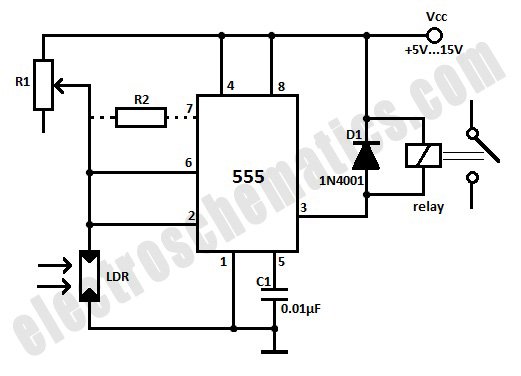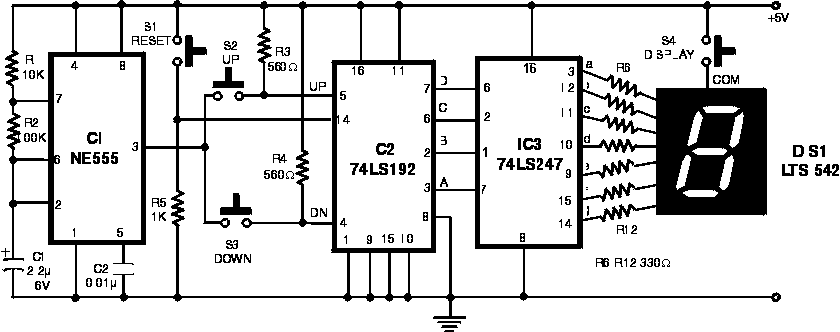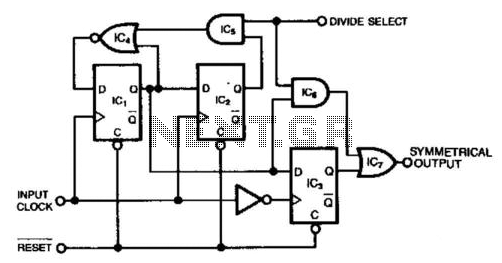
Touch Volume Control Circuit
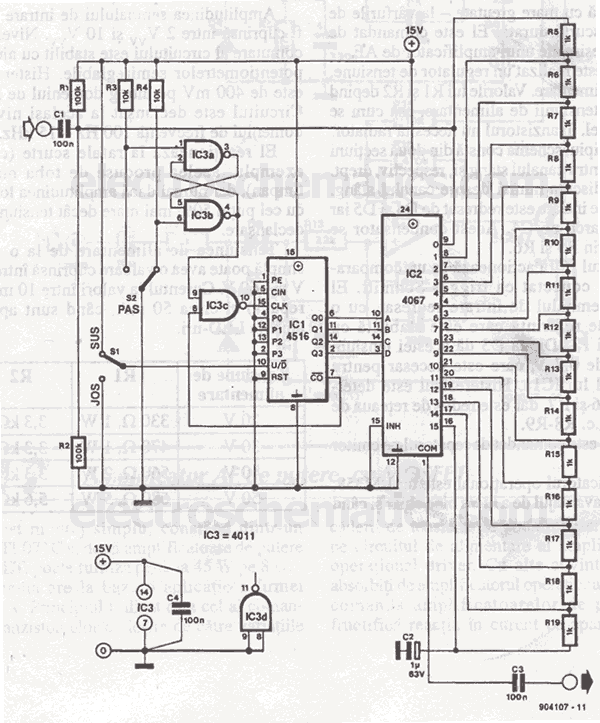
Touch controls are not only utilized for switching devices on or off but can also manage various functions. A notable example is the TV remote control. When it is crucial to maintain activated functions for an extended period, employing a digital memory system is advisable. However, for scenarios where minor variations in control status are acceptable, a simple analog design can suffice for memory retention. The touch volume controller exemplifies an analog memory touch control switch. Its primary operation revolves around IC1, which is an operational amplifier configured as an integrator with a high impedance input. When sensor 1 is activated, capacitor C2 charges through the skin resistance, causing the output voltage of IC1 to decrease linearly until it reaches zero volts. Conversely, activating sensor 2 results in a linear increase in the voltage at pin 6 of IC1 until it matches the power supply level. A distinctive feature of this touch volume control circuit is that once the user's finger is removed from the sensor(s), the output voltage of IC1 remains at the last level, as this voltage value is retained by C2. However, this analog memory system is susceptible to voltage drift over extended periods, experiencing a 2% decrease per hour due to inevitable leakage current in the capacitor. To mitigate this issue, it is advisable to enclose the circuit in a moisture-proof box. The touch volume controller circuit has a broad range of applications, suitable for devices where potentiometer control is achieved through voltage levels. Additionally, the touch sensors can be substituted with conventional push-button switches. Capacitors C1 and C4 play a critical role in the circuit, preventing IC1 from oscillating. Closing both switches simultaneously will not harm the circuit.
The touch volume controller circuit operates effectively by utilizing a high-impedance input configuration of an operational amplifier, which allows for sensitive detection of touch inputs. The integration function of the op-amp facilitates the conversion of touch inputs into a corresponding voltage output, which is crucial for applications requiring precise volume control or similar functions. The design incorporates capacitors that serve dual purposes: they stabilize the circuit by preventing oscillations and contribute to the retention of the output voltage level when the touch sensors are disengaged.
In practical applications, the touch volume controller can be integrated into various electronic devices, enhancing user interaction through touch sensitivity. The ability to replace touch sensors with push-button switches adds flexibility to the design, catering to different user preferences and operational environments. Furthermore, the moisture-proof enclosure recommendation underscores the importance of protecting the circuit from environmental factors that could exacerbate the voltage drift issue, thus extending the operational reliability of the device.
Overall, this touch volume controller circuit provides a versatile solution for modern electronic devices, balancing the need for user-friendly interfaces with the challenges of maintaining consistent performance over time.Touch controls are not only used to switch devices on or off. They can also be used to control different functions. One good example is the TV remote control. If it is very important to keep the activated functions for a long period of time, it is always better to use a digital memory system. However, if small drifts in the control status is accep table, a simple analog design can be used to memorize the status. The touch volume controller is one such analog memory touch control switch. The main function centers mostly on the IC1. It is an opamp configured as an integrator with a high impedance input. If sensor 1 is touched, the capacitor C2 charges through the skin resistance and voltage at the output of IC1 decreases linearly until it reaches zero volt. Touching the other sensor (sensor 2) will produce the opposite result: the voltage at the pin 6 of IC1 will increase linearly until it reaches the power supply level.
The special function of this touch volume control circuit is that after moving your finger away from the sensor(s), the output voltage of IC1 stays at that level. This voltage value is memorized by C2. This analog memory however has a problem in long time periods: The voltage value drifts away by 2 % per hour due to the unavoidable current leak in the capacitor.
To improve this situation, it is highly recommended to put this circuit in a moisture proof box. This touch volume controller circuit has a wide application range. It can be used in devices where a potentiometer can be controlled through voltage levels. The touch sensors can alse be replaced with conventional push button switches. The capactiors C1 and C4 are very important in the circuit: they prevent the IC1 from oscillating. Simultaneously closing both switches will not damage the circuit. 🔗 External reference
The touch volume controller circuit operates effectively by utilizing a high-impedance input configuration of an operational amplifier, which allows for sensitive detection of touch inputs. The integration function of the op-amp facilitates the conversion of touch inputs into a corresponding voltage output, which is crucial for applications requiring precise volume control or similar functions. The design incorporates capacitors that serve dual purposes: they stabilize the circuit by preventing oscillations and contribute to the retention of the output voltage level when the touch sensors are disengaged.
In practical applications, the touch volume controller can be integrated into various electronic devices, enhancing user interaction through touch sensitivity. The ability to replace touch sensors with push-button switches adds flexibility to the design, catering to different user preferences and operational environments. Furthermore, the moisture-proof enclosure recommendation underscores the importance of protecting the circuit from environmental factors that could exacerbate the voltage drift issue, thus extending the operational reliability of the device.
Overall, this touch volume controller circuit provides a versatile solution for modern electronic devices, balancing the need for user-friendly interfaces with the challenges of maintaining consistent performance over time.Touch controls are not only used to switch devices on or off. They can also be used to control different functions. One good example is the TV remote control. If it is very important to keep the activated functions for a long period of time, it is always better to use a digital memory system. However, if small drifts in the control status is accep table, a simple analog design can be used to memorize the status. The touch volume controller is one such analog memory touch control switch. The main function centers mostly on the IC1. It is an opamp configured as an integrator with a high impedance input. If sensor 1 is touched, the capacitor C2 charges through the skin resistance and voltage at the output of IC1 decreases linearly until it reaches zero volt. Touching the other sensor (sensor 2) will produce the opposite result: the voltage at the pin 6 of IC1 will increase linearly until it reaches the power supply level.
The special function of this touch volume control circuit is that after moving your finger away from the sensor(s), the output voltage of IC1 stays at that level. This voltage value is memorized by C2. This analog memory however has a problem in long time periods: The voltage value drifts away by 2 % per hour due to the unavoidable current leak in the capacitor.
To improve this situation, it is highly recommended to put this circuit in a moisture proof box. This touch volume controller circuit has a wide application range. It can be used in devices where a potentiometer can be controlled through voltage levels. The touch sensors can alse be replaced with conventional push button switches. The capactiors C1 and C4 are very important in the circuit: they prevent the IC1 from oscillating. Simultaneously closing both switches will not damage the circuit. 🔗 External reference
Warning: include(partials/cookie-banner.php): Failed to open stream: Permission denied in /var/www/html/nextgr/view-circuit.php on line 713
Warning: include(): Failed opening 'partials/cookie-banner.php' for inclusion (include_path='.:/usr/share/php') in /var/www/html/nextgr/view-circuit.php on line 713
